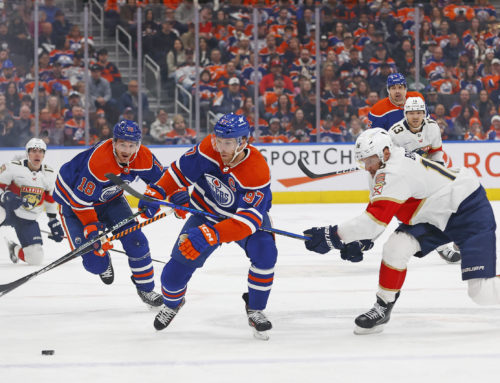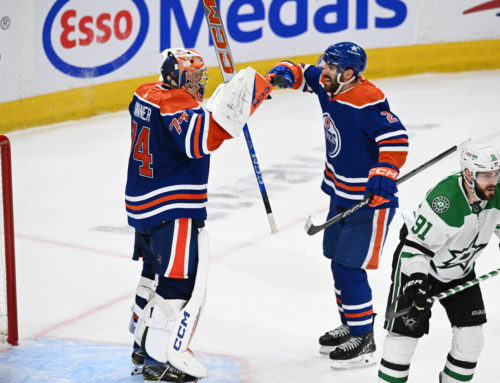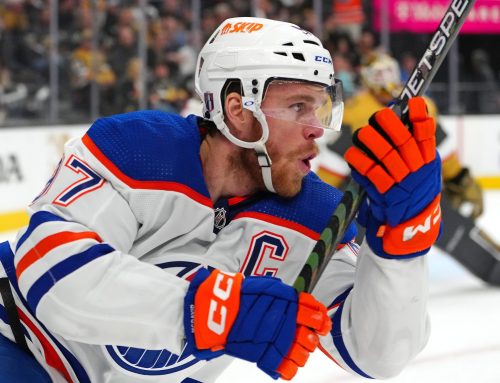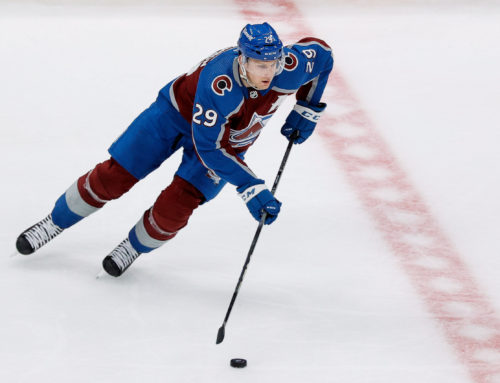Keeper League #6
Dobber Sports
2007-09-10
How to Start a Keeper League – Version #6
This ‘Lifetime Insanity Pool’ is fairly typical, but it puts heavier emphasis on defensemen scoring. It also requires roster updates every two weeks, i.e. choose the 16 guys you would like to activate.
They also make it clear that wimps need not apply – strict rules with regards to emails, etc. I like that – you need to be firm with that rule before starting a hockey pool, or you will be left with one or two boneheads who do not email promptly, or are not available when you need them. Thanks to Jaron for this one.
Overview
This pool is designed for the 'extreme' hockey fan. If you are merely a casual fan of the NHL, you may find the work associated with this pool overwhelming. If, however, you think you know as much as the average NHL GM, this is the pool for you. If you follow the NHL pretty closely, this pool shouldn't be a lot of extra work for you.
1. The number of teams in this pool will remain relative to the number of teams in the NHL.
a. Based on the depth of talent in the league, every two(2) NHL teams in existence will warrant one fantasy team. Currently there are thirty (30) teams in the league, which allows for fifteen (15) fantasy teams. We currently have 14 lifetime teams.
2. The cost of the pool may change from year to year.
a. The annual fee (per team) is currently set at $50.
b. For the inaugural season, the one-time expansion fee applied to new teams is waived, as this is a brand new league.
c. Total purse collected will be $700.
d. The winner takes home $500 (see FAQ*). Second place takes home $100, third $60, and fourth $40. The nominal payout to the top four finishers, although not a large amount, is intended to reward the better teams. This also discourages GMs from sandbagging toward the end of the season. Trying for an extra $20 should outweigh the motivation of trying for a slightly better draft pick the next season. You will see that a GM can affect his team's performance throughout the year by changing his roster. There is also a small penalty implemented (see FAQ*) to discourage teams near the bottom of the standings from intentionally finishing in last place (for the first draft pick).
3. It is not uncommon for people to sell their teams for a profit in year-to-year hockey pools. Your team is truly an investment.
a. As friends/coworkers of your fellow GMs hear about this style of pool, there is often great demand to acquire a team. The fact that the initial 14 teams DO NOT have an expansion fee is a great opportunity for you to get in on the ground floor.
b. As people lose interest in the pool, go traveling, or are hard-up for cash, there may be turnover of team owners from year to year. So if your friends are interested, they may want to buy a team (assuming they are not one of the original 14).
c. It is also common practice for a GM to sell a successful (i.e. potentially profitable) team, and invest in a new expansion franchise when the league grows.
4. In the case of expansion, a one-time expansion fee of half of the annual fee is required before the standard annual fee payable from the new GM every season.
a. This additional money (i.e. $25 expansion fee) is put toward the first place purse for that season.
Qualification
1. To be eligible to participate in this pool you must have an email account that you check regularly (almost daily).
a. The majority of the administrative work for the pool is executed electronically.
2. Payment is required at the beginning of each season, and the funds will be held in a savings account until the end of the regular season. A single individual may not own two teams within this fantasy league.
Roster
1. Every team is allowed to carry up to 23 players on its roster. The positions of these players will be at the discretion of each GM. The only restriction is that you must be able to dress a starting lineup that includes:
Nine(9) Forwards
Six(6) Defensemen
One(1) Goaltender
(i.e. So while one team may carry 16f/6d/1g another team might have 9f/10d/4g)
2. The initial draft begins about three(3) weeks prior to the start of the first season.
a. The start of the draft is on a Sunday and Each GM has only 5 minutes to make each pick.
b. The initial draft is like a standard hockey pool. Lots will be drawn to determine order, and selections are made 1 through 14, then 14 through 1.
3. After the first day there are three(3) weeks of selections and each GM will have up to 12 hours to make their picks.
a. If the picks are not all made by the Sunday before the start of the season we will have another draft day where GMs must make their selections with only five(5) minutes to make each pick.
Lineup Changes (Roster Moves)
1. There may be as many as seven(7) players on the bench at any given time.
2. Players may be moved in and out of your lineup every two(2) weeks.
a. Moves must be sent via email to the league commissioner every other Sunday during the season.
b. You must send these moves to the league commissioner by 5pm EST. Changes will be made in officepools.com on Monday, one day after your roster changes are due.
3. Every position on each GM's roster has a point total, regardless of substitutions.
a. Players only accumulate points toward one of the roster positions when they are dressed in one of the 16 positions.
b. Each roster position may be broken down with the trade feature on officepools.com to show the detailed history of each position over the year.
4. Officepools.com shows teams as 16 players with only active players displayed and the current score of the team.
a. Excel spreadsheets are sent out monthly showing the full 23 man roster of each team so every GM has current rosters for trade discussions.
b. This sheet also includes future years draft order if affected by trades.
Free Agent Pickups
1. At the end of every calendar month, GMs have the option of adding one(1) additional player to their roster, from the pool of available players.
a. If a team's roster is full (23 players) they have to release one player if they wish to make the monthly addition.
b. Free agent pickups begin with the GM in last place, and continue up through the standings.
Trades
1. Trades may be negotiated independently between GMs. This is why it is important to be available via email.
a. The league commissioner must approve all trades. This is to avoid team-stacking and purse-splitting.
b. It is very rare that a trade is actually vetoed. Trades that include draft picks or unequal numbers of players are permitted, while trades that include the exchange of cash, including future considerations, or are blatantly unbalanced (i.e. Jagr for Valk) are not permitted.
c. Some trades that seem lopsided may be allowed if a GM is making desperation moves due to injuries (or a roster that is poorly balanced).
Scoring
1. Forwards are awarded a single point for each goal, and a single point for each assist.
a. Defensemen are awarded two(2) points per goal, and one(1) point per assist.
b. Goalies are awarded two(2) points per win (including overtime win), one(1) point per tie (including overtime loss), and an additional three(3) points for a shutout.
2. A reasonably good player, regardless of position (i.e. In 2000/01 Leetch/Elias/Roy, or 2001/02 Iginla/Gonchar/Hasek) would all be scored around 100 pts. This scoring system is intended to make each of the three positions equally important. This way there will be no premium placed on any one position during the draft.
Annual Waiver/Rookie Draft
1. At the beginning of each new season, returning GMs from the previous year are allowed to protect 15 of the 23 players on their roster for next season. The remaining players become free agents, and are eligible for the draft.
2. In most years there is no expansion. During these years, draft order will go worst to first each round based on last season's finish.
a. The draft is limited to eight(8) rounds, even if GMs have further roster vacancies.
3. The worst to first order of the waiver/rookie draft is intended to give an advantage to the weaker teams, in the hopes to create some equity within the pool.
a. The teams finishing in last theoretically get top draft picks as well as the cream of the crop that was left unprotected from the previous year.
4. There are two types of players available each year: those players released from your fellow GMs' rosters (usually eight(8) per team) from last season, and new players drafted into the NHL that Summer.
a. Players (Juniors/Minors) not drafted into the NHL are not eligible until they are drafted (i.e. Rick Nash Summer '02) or signed as free agents (i.e. undrafted Mike Johnson, Summer '96) by an NHL team. So a Junior Player who is 16 years of age is ineligible because he hasn't been drafted yet. A superstar in the Swedish Elite League is not eligible if his rights have never been held by an NHL team.
*Please note that eligibility has nothing to with contract status, or current roster status of players. Any player who has EVER had his rights held by an NHL team is eligible as long as he is not protected by a fellow GM*





 FLA
FLA CHI
CHI NYR
NYR PIT
PIT L.A
L.A COL
COL CBJ
CBJ BUF
BUF ANA
ANA MTL
MTL EDM
EDM PHI
PHI S.J
S.J VGK
VGK
